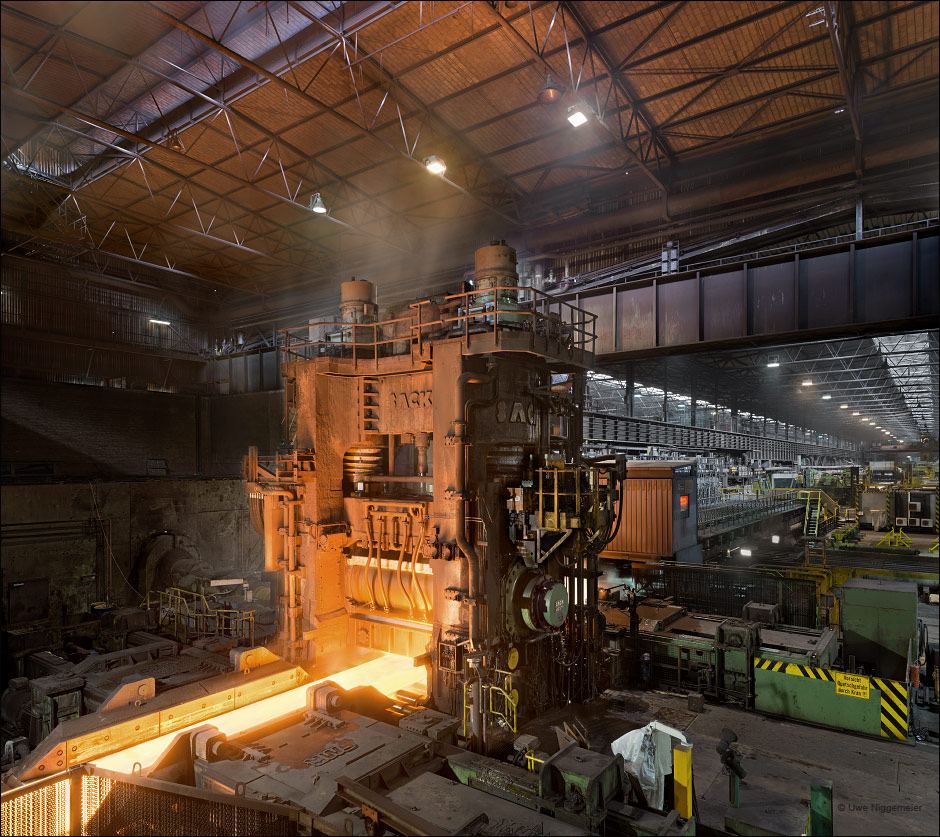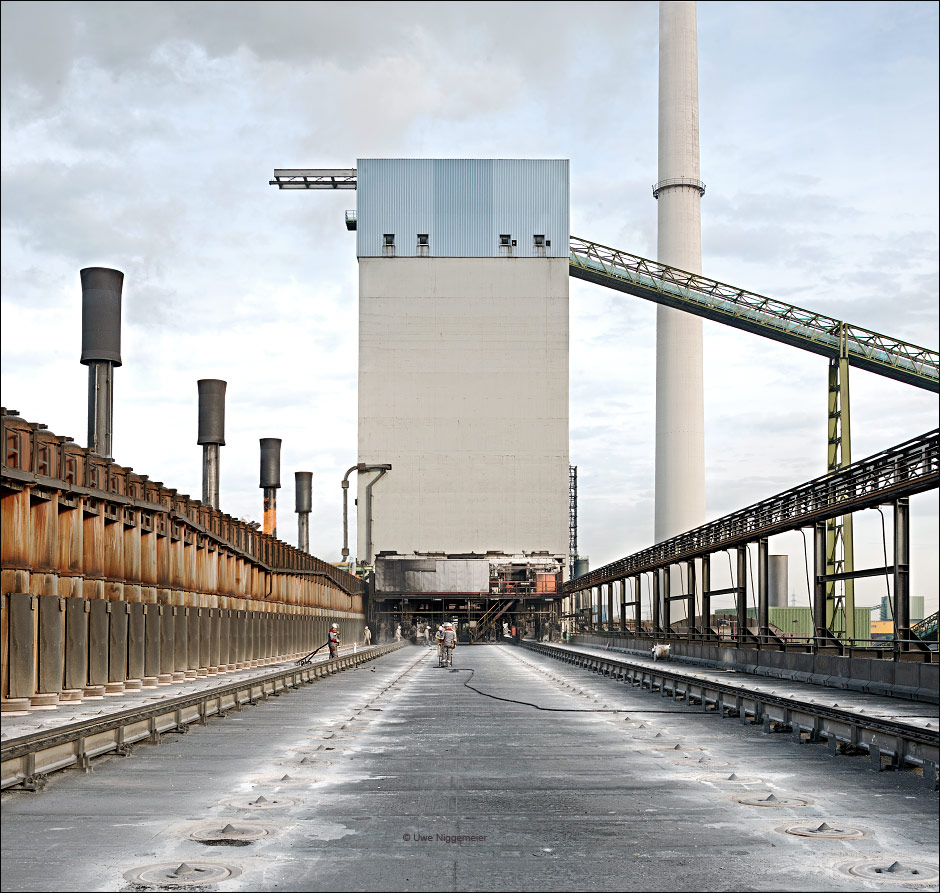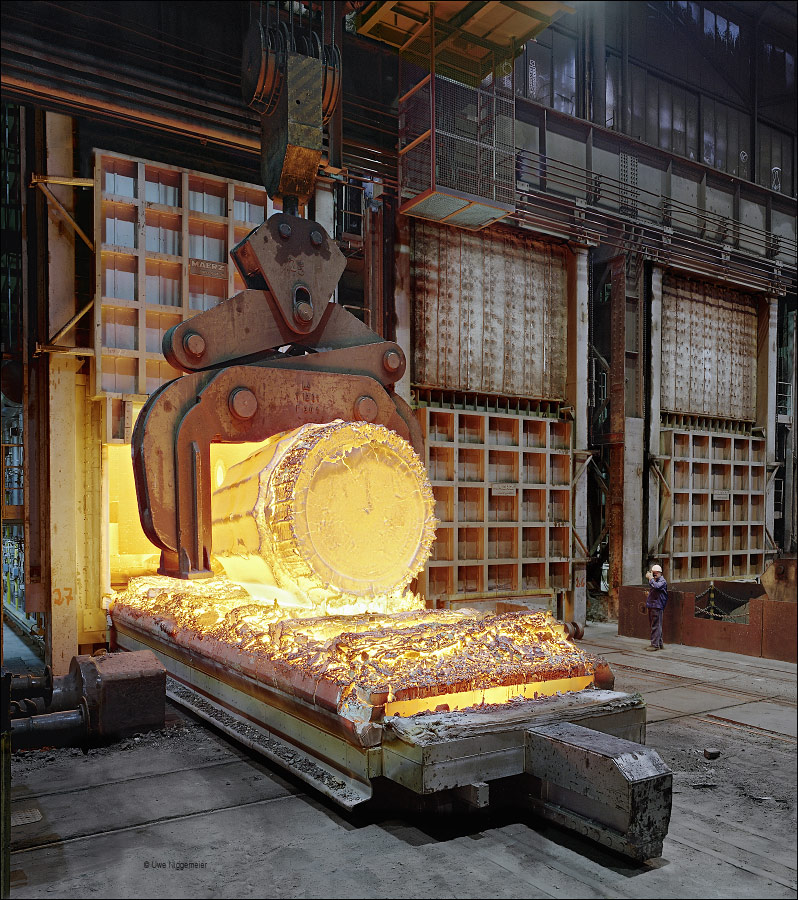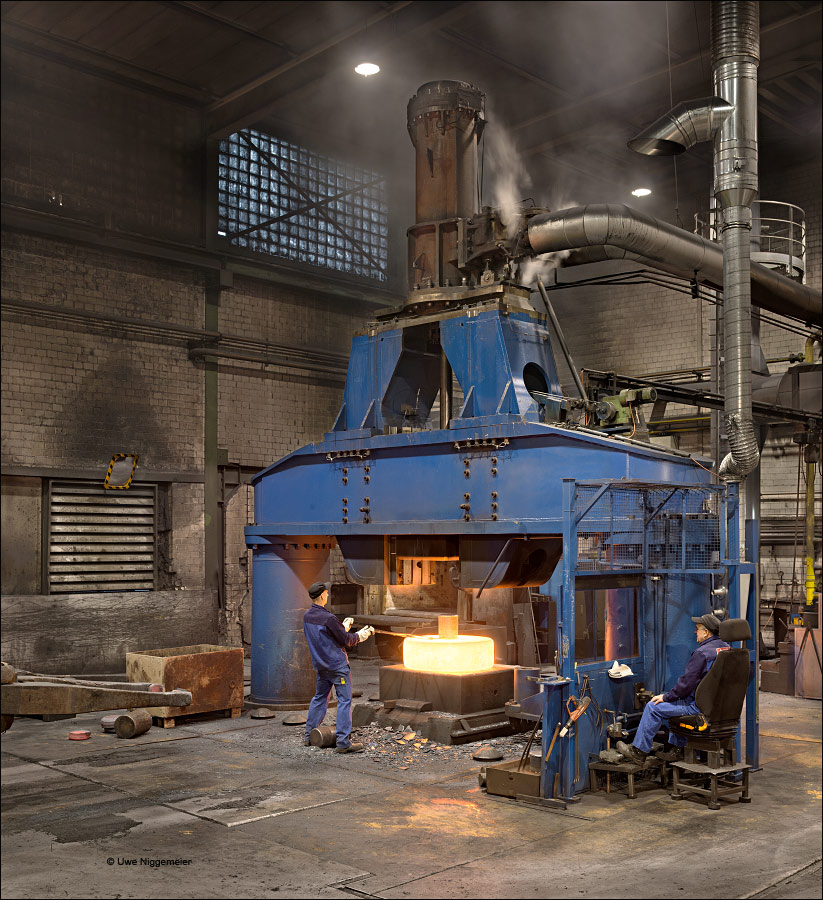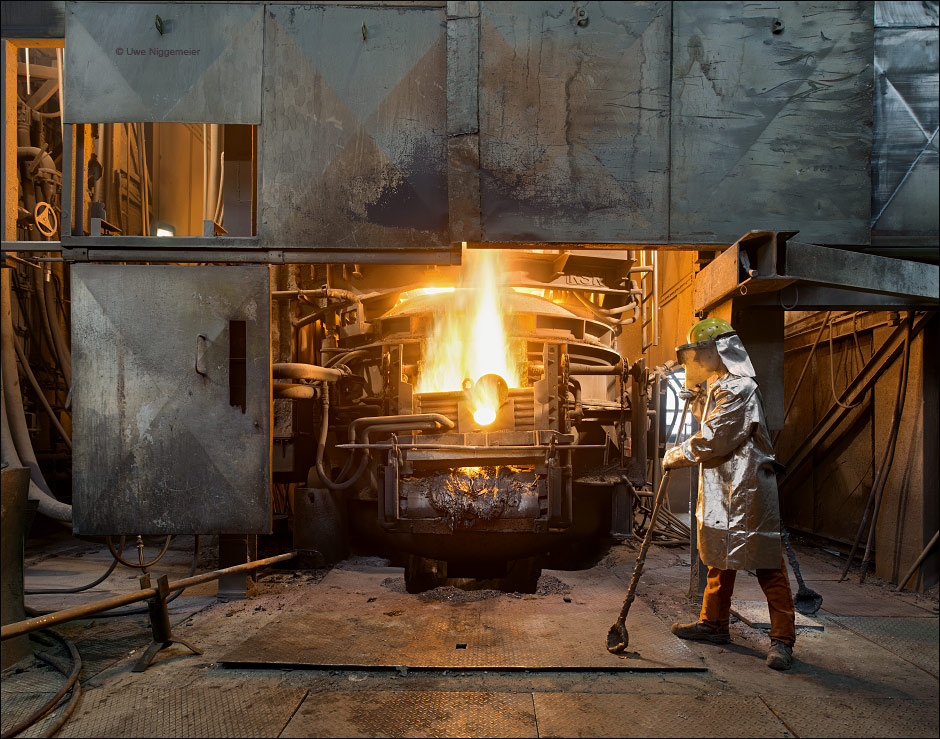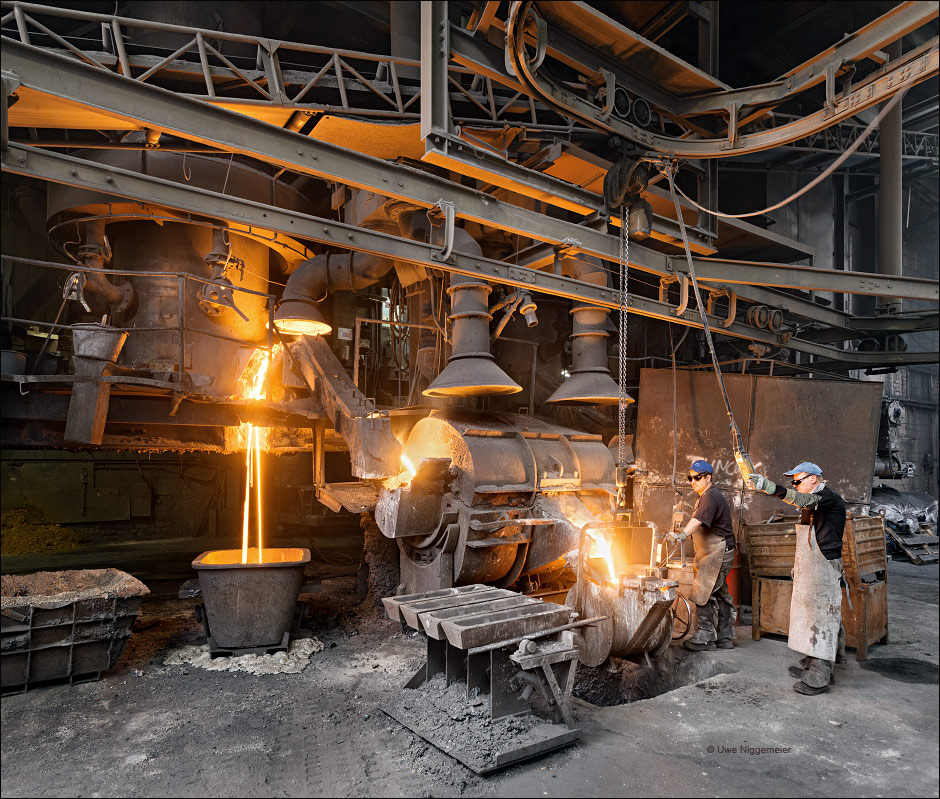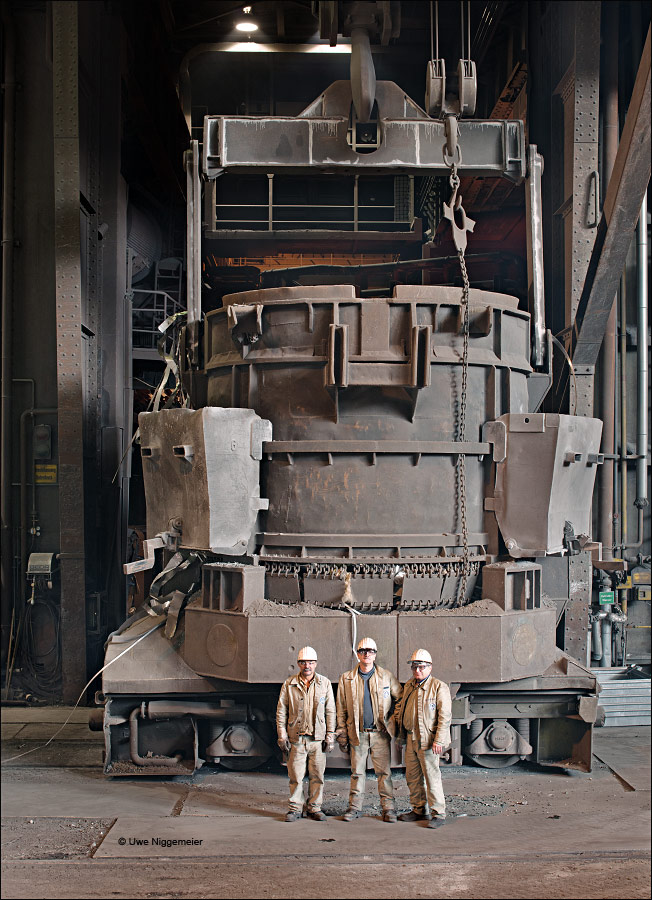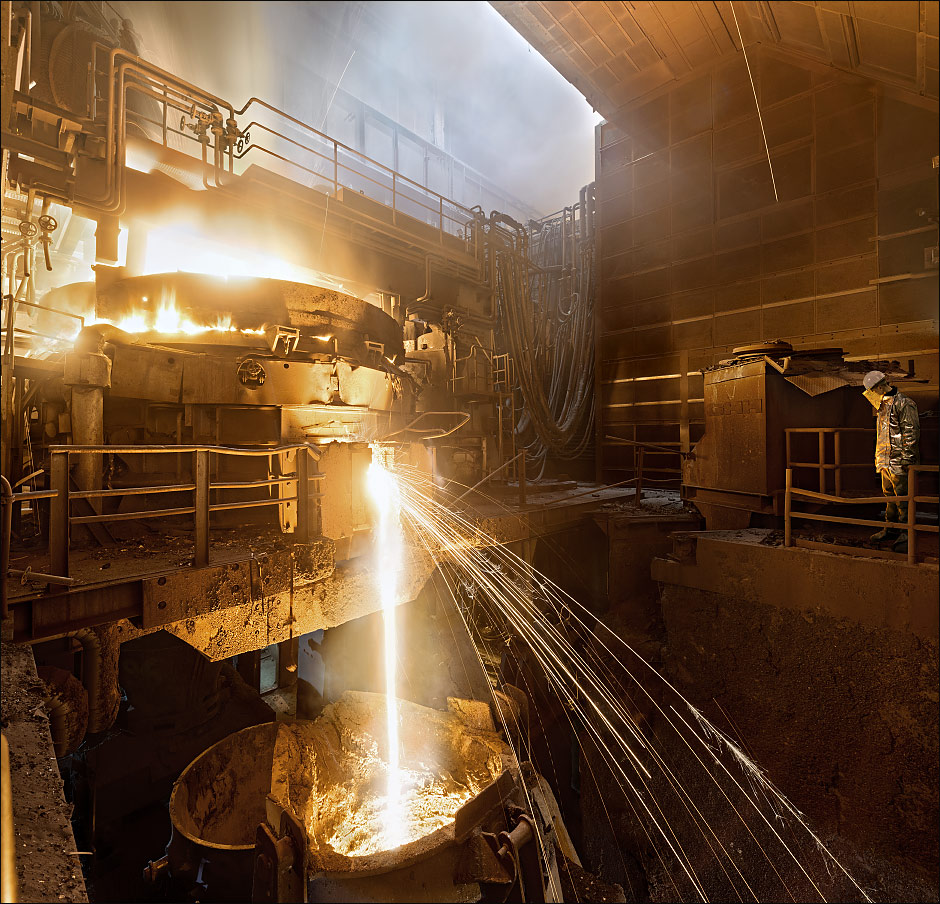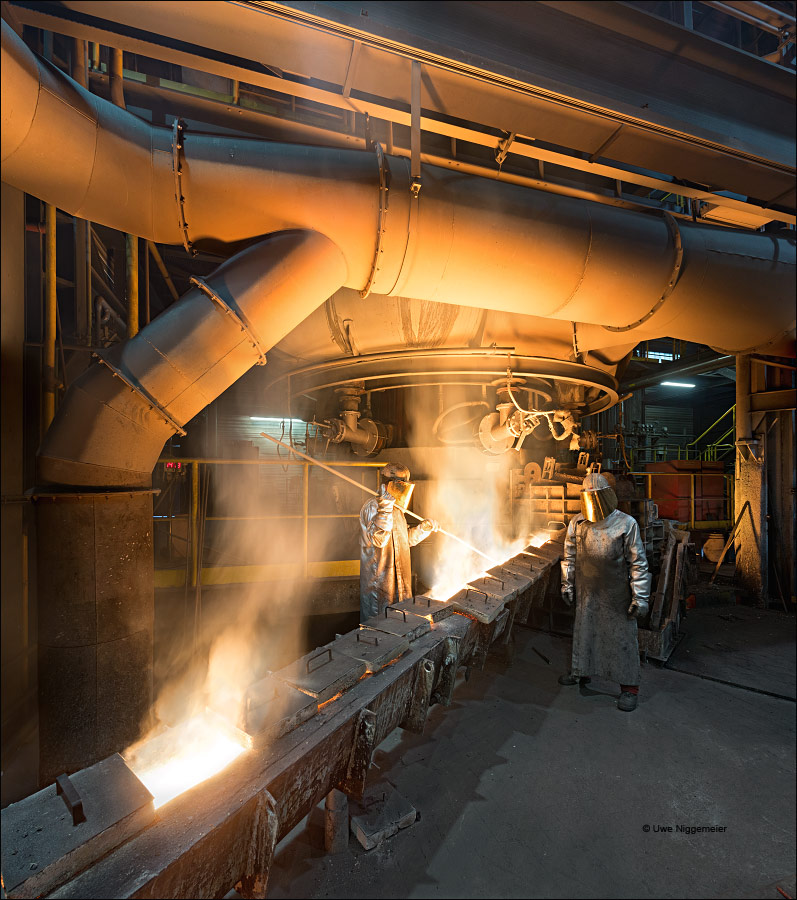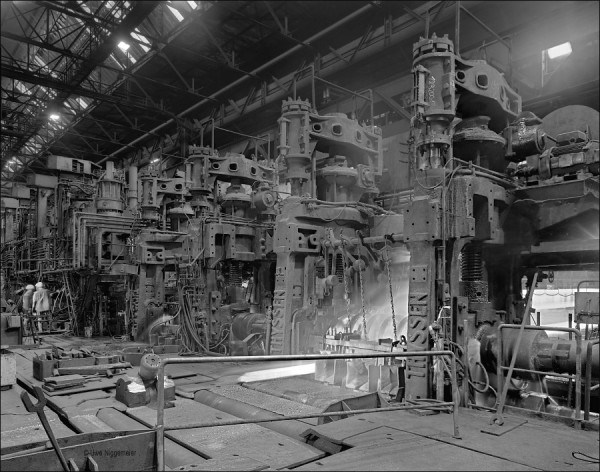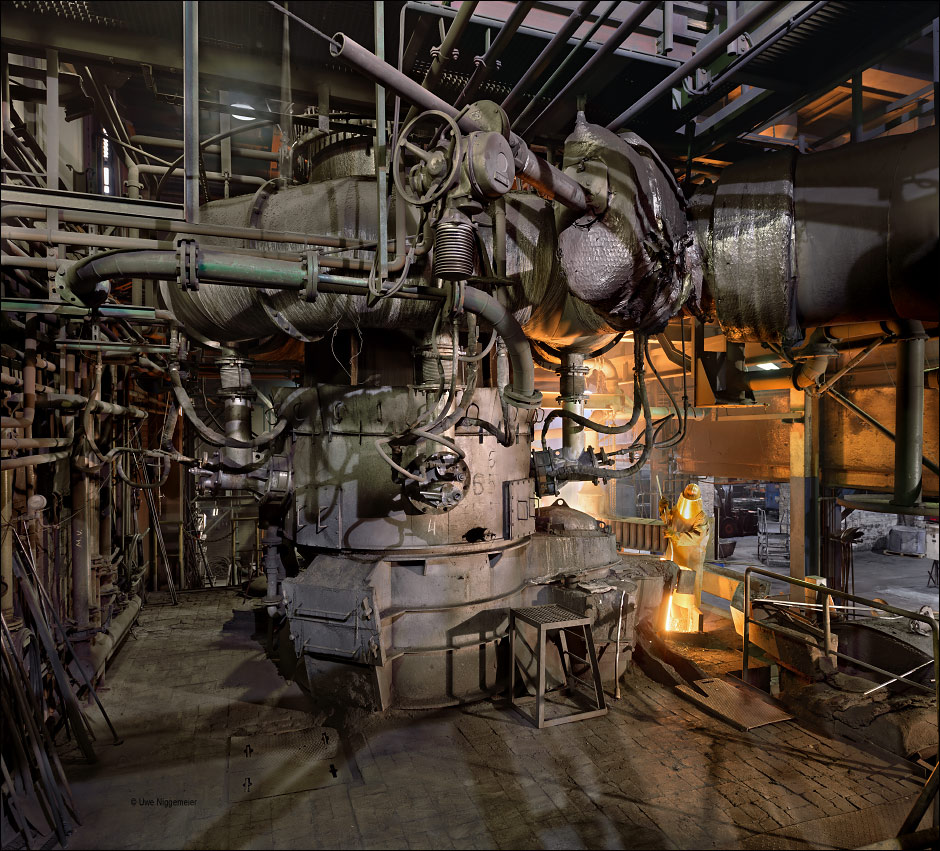TKS Heavy Plate Mill, Duisburg
The heavy plate mill in Duisburg-Hüttenheim, Germany was built by the Mannesmann company in 1963 to supply plates to their adjecent large diameter pipe welding mill (closed in 1978).
In 1970 the August Thyssen Hütte AG took over the flat rolling business from Mannesmann.
In 1978 the Sack company installed the 3,9 meter four-high rolling stand still in use today.
Images now at Stahlseite.

